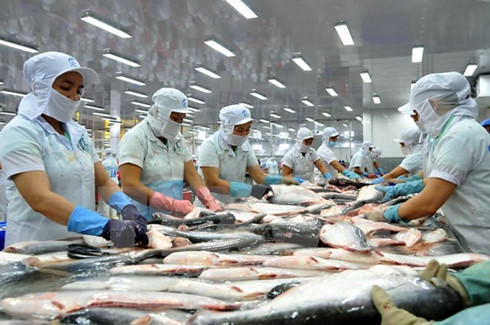Farmers and other actors in the industry are now deeply concerned they won’t be able to comply with the United States Department of Agriculture (USDA) new inspection rules for catfish that become mandatory in August 2017.

There is legitimate concern they may lose the entire US market altogether, says the Vietnam Association of Seafood Exporters and Producers (VASEP).
Under the new rules, that technically were passed last March, catfish are no longer considered seafood by the US Food and Drug Administration (FDA), but are designated as a "species amenable to" the Federal Meat Inspection Act.
As a result, catfish and a few other species of fish will be inspected by the US Department of Agriculture Food Safety and Inspection Service rather than by the Food and Drug Administration's seafood inspection program. All other seafood will continue to be inspected by the FDA.
In substance, catfish are now recognized for import purposes as – meat – similar to beef or pork and as such are subject to an additional level of inspections that will increase the expense and difficulty for Vietnamese consignments to the US.
The USDA's inspections are also much more burdensome and frequent than the FDA's and have a separate "equivalency" test for imports, which adds a layer of regulations only on imports and could take Vietnam years to implement.
In the meantime, the Vietnam farm raised catfish industry would be completely barred from the US market, in its entirety. The catfish rule doesn’t become mandatory until August 2017 due to an 18-month transition period.
The US Senate recently voted to scrap the new inspection program altogether on the grounds it was duplicative, wasteful and unnecessary.
However, the Senate bill would still need the approval of the US House of Representatives and President Barack Obama’s signature to become law, a proposition that appears highly unlikely to happen.
The US is the leading export market for Vietnamese catfish, accounting for more than 20% of the Southeast Asian nations overseas sales. These sales totalled $318 million in 2015.
Truong Dinh Hoe, general secretary of VASEP, said the stiffer requirements will create a huge financial burden for the industry as a whole in Vietnam – if it is even possible for them to comply – as there are huge differences between rearing, transporting and processing catfish in the US compared with Vietnam.
US catfish, principally farmed in southern US states of Mississippi, Alabama and Louisiana, are grown in specially constructed shallow ponds that are filled with well water and fed with expensive extruded feed made from grain.
In Vietnam, catfish are grown in ponds that are supplied continuously with treated water from the Mekong River, and are fed a less expensive diet consisting principally of soybean meal.
Catfish harvested in the US are transported to the processing plants live on-board trucks equipped with aerated water tanks. In Vietnam, they are transported live, but in well boats and not in aerated water.
Processing plants in the US are, in general, better equipped than in Vietnam, although there are in-country factories that possess state-of-the-art technology such as those of Vinh Hoan Corporation, the leading supplier of catfish to the US market.
Nguyen Ngo Vi Tam, CEO of Vinh Hoan, said his company is one of a handful of entrepreneurs that has an established integrated production chain running the gamut from breeding, farming and processing to export.
Only three local companies in Vietnam currently export catfish to the US economy, according to Tam, with his company accounting for a 45 per cent market share.
Many – both inside and outside of Vietnam – argue the new USDA inspection program is simply a means of protecting the domestic US channel catfish industry by throwing up barriers to trade by complicating the import process.
The value of Vietnamese catfish exports to the US has been declining over the past five years, according to VASEP. It jumped from $358 million in 2012 to $380 million in 2013, but has since dropped to $318 million in 2015.
This decline in export value was not caused by US regulations, Vo Hung Dung, vice chairman and general secretary of the Vietnam Pangasius Association, admitted, but was “a result of our own internal problems.”
Vietnamese authorities have recognised for years that merely aiming to supply cheaper product, with little regard for quality, is not the way to build a sustainable and expanding industry, said Dung, but they have failed to act.
Dung has called for a package of technical support from the US.
This would be to upgrade the quality of Vietnamese catfish from farming and transport to processing and export. He said that forcing an upgrade in quality would provide an effective marketing tool.
Vietnamese catfish would no longer be in the “lower segments” of the fish trade so its export value would improve, he concluded.

















